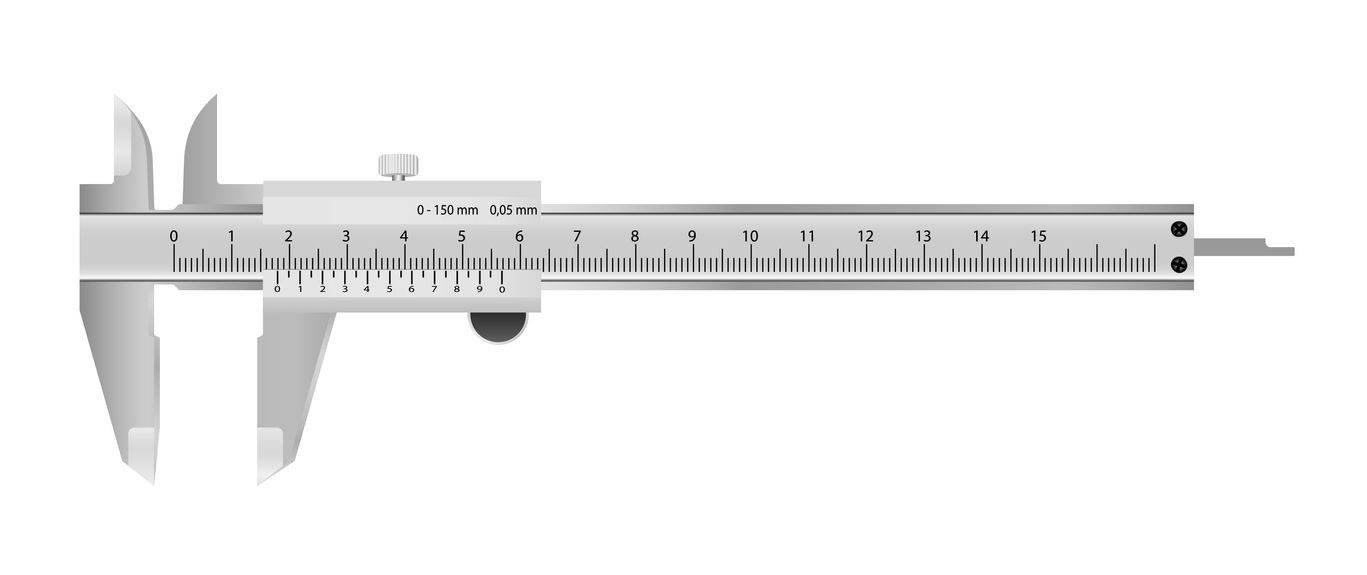This article explains why the thickness of thin plastic sheet material is important and compares the units of measurement used in the UK and USA - and the confusion which can ensue. As an example, the thickness of plastic poster cover sheets is used to illustrate why different gauges of plastic sheets are specified.

Sheet thickness is often stated by the manufacturer or it can be measured using a micrometer, as using a ruler would be impractical for such small sizes. The thickness of thin sheet material such as plastic sheets needs to be known as it will influence properties such as the sheet stiffness - i.e. how easily the sheet can flex.
In the metric system of measurement, such as used in the UK, the millimetre (mm) is a convenient small unit of measurement and sheet thickness can be stated as, say, 1 mm. However for thicknesses below 1 mm it is often convenient to divide 1 mm into 1000 parts and these units are called microns. Thus 0.5 mm is 500 microns.
In USA 'mil' is a measurement equal to 1/1000 of an inch. Mil is the same as the old UK imperial unit Thou (one thousandth of an inch). Americans state the plural version as mils. This is potentially very confusing to metric users as it sounds identical to the colloquial for millimeters - spoken as mil or mils though always written as mm. The word means something quite different on each side of the Atlantic!
To give some examples applicable, for example, to flexible plastic cover sheets of many poster
frames (such as snap frames):
400 micron or 0.4 mm = 15 mils (to be precise 15.75 mils)
Americans might also write .015" thickness.
Any thickness below this would typically be very flexible and would only be suitable for smaller poster frames (up to A3 size).
500 micron or 0.5 mm = 20 mils
In North America it might be written .020" thickness.
This is a very common thickness for a poster protector sheet for medium size poster frames - such as A2 or A1 snap frames. It is not too thick to ship rolled up in a large tube when spare poster covers are ordered.
1000 micron or 1mm = 39 mils (to be precise 39.37 mils)
but it would probably get rounded to 40 mils as plastic sheets generally have a manufacturing tolerance. At this thickness plastic sheet is becoming fairly rigid and it could not be rolled up easily except in a big drum. So it would have to be shipped flat and unless furnished with adequate packaging it could be vulnerable and wibbly wobbly (to use a technical term).
When the plastic sheet is required to be structurally stiff thicker material is called for - typically 2 mm thick or more. This would apply to the plastic 'glazing' used in the hinged door of a poster case or covered notice board. In this case the plastic functions more like a window rather than a protective skin. Plastic sheet, such as acrylic or polycarbonate, with thickness 2mm or 3mm would also be specified for items such as free-standing plastic table-top print holders which need to be self supporting. For US readers 3mm is approx 1/8th inch.
For very thin sheets, such as material supplied on rolls and used for printing, the WEIGHT of the sheet may be expressed, rather than the thickness - often stated as gsm, which stands for grams per square metre. Depending on the density of the particular material the gsm weight and micron thickness can coincidentally be quite close in number, but use that only as a very rough guide as it is not reliable for comparing materials. E.G. 200 gsm and 200 micron don't mean the same thing even though a particular sheet may happen to feature the same number in both units of measure.
200 gsm may also be referred to as 200 gram but as with all compound units this is lazy usage and gsm or gm/m2 is required to avoid any misunderstanding.
Metals can are also regularly supplied in thin sheets and in this case the thickness is often referred to as the 'gauge'.
Gauge can be a little confusing to the uninitiated as it appears to be a 'backwards' scale.
The higher the number the thinner the sheet. For example, 1.5 mm thick metal sheet is 16 gauge
(16 swg) whereas the much thinner 0.5 mm metal sheet is 24 swg.
More detailed explanations of metal sheet thicknesses are available elsewhere on the web. SWG stands for Standard Wire Gauge (or originally British Standard Wire Guage). It is not used for plastic sheets.
The ISO (International Standards Organisation) metric paper size nomenclature can also catch people out because it also can seem to be a backwards scale: A8 paper is very small, A4 is closest to US letter size, and A0 is used for large posters. Most European users will consider A sizes totally natural and familiar whilst being baffled by the term 'letter size'. In US and Canada the reverse may be true. So communicate with care!
The same respect and caution needs to be execised when discussing plastic and paper thickness on different sides of the Atlantic ocean.